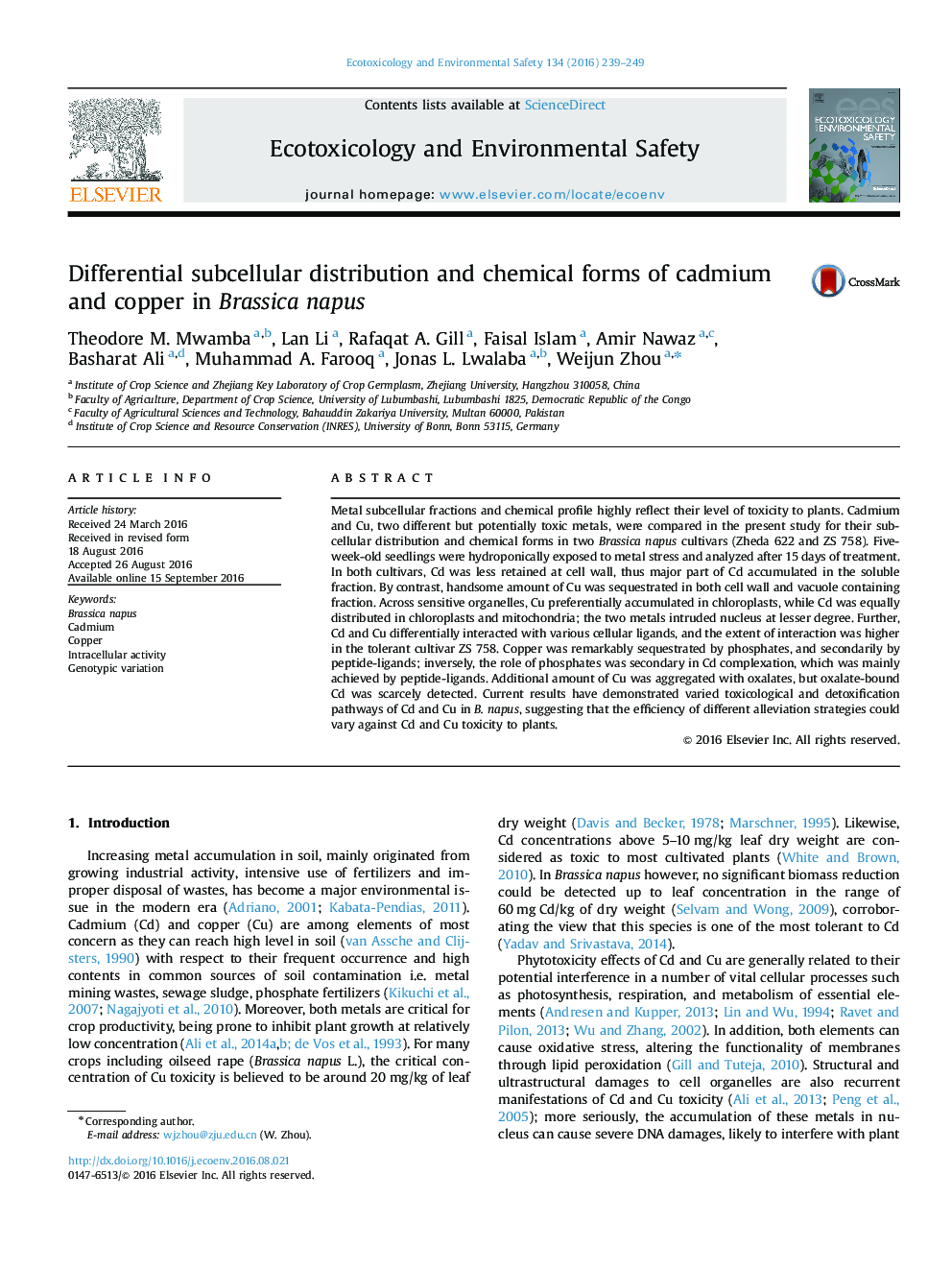| کد مقاله | کد نشریه | سال انتشار | مقاله انگلیسی | نسخه تمام متن |
|---|---|---|---|---|
| 4419151 | 1308446 | 2016 | 11 صفحه PDF | دانلود رایگان |

• Differential subcellular distribution and chemical forms of Cd and Cu.
• Cell wall (for Cu) and vacuole (for Cd and Cu) were main metal storage sites.
• More Cu intruded chloroplast than mitochondria, but Cd was equally distributed.
• Cd and Cu differentially interacted with various cellular ligands.
• Genotypic differences existed in the ability to modulate metal activity inside cell.
Metal subcellular fractions and chemical profile highly reflect their level of toxicity to plants. Cadmium and Cu, two different but potentially toxic metals, were compared in the present study for their subcellular distribution and chemical forms in two Brassica napus cultivars (Zheda 622 and ZS 758). Five-week-old seedlings were hydroponically exposed to metal stress and analyzed after 15 days of treatment. In both cultivars, Cd was less retained at cell wall, thus major part of Cd accumulated in the soluble fraction. By contrast, handsome amount of Cu was sequestrated in both cell wall and vacuole containing fraction. Across sensitive organelles, Cu preferentially accumulated in chloroplasts, while Cd was equally distributed in chloroplasts and mitochondria; the two metals intruded nucleus at lesser degree. Further, Cd and Cu differentially interacted with various cellular ligands, and the extent of interaction was higher in the tolerant cultivar ZS 758. Copper was remarkably sequestrated by phosphates, and secondarily by peptide-ligands; inversely, the role of phosphates was secondary in Cd complexation, which was mainly achieved by peptide-ligands. Additional amount of Cu was aggregated with oxalates, but oxalate-bound Cd was scarcely detected. Current results have demonstrated varied toxicological and detoxification pathways of Cd and Cu in B. napus, suggesting that the efficiency of different alleviation strategies could vary against Cd and Cu toxicity to plants.
Journal: Ecotoxicology and Environmental Safety - Volume 134, Part 1, December 2016, Pages 239–249